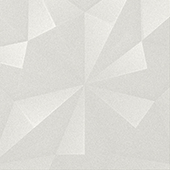
介绍:
TPO 15 Lecture 3 Art History
Narrator:
Listen to part of a lecture in an art history class.
Professor:
Now in Europe in the Middle Ages before the invention of printing and the printing press, all books, all manuscripts were hand-made. And the material typically used for the pages was parchment, which is animal skin that’s stretched and dried under tension, so it become s really flat and can be written on . During the 1400s, when printing was being developed, paper became the predominant material for books in Europe, but prior to that, it was parchment. Parchment is durable, much more so than paper, and it could be reused which came in handy since it was a costly material and in short supply, so it wasn ’ t uncommon for the scribes or monks who produced the manuscripts .
Ah, remember before printing books were made mainly in monasteries . Well, the scribes often recycled the parchment that’d been used for earlier manuscripts. They simply
erased the ink off the parchment and wrote something new in its place
A manuscript page that was written on, erased and then used again is
called a palimpsest.
Palimpsests were created, well, we know about two methods that were used for removing ink from parchment. In the late Middle Ages, it was customary to scrape away the surface of the parchment with an abrasive, which completely wiped out any writing that was there. But earlier in the Middle Ages, the original ink was usually removed by washing the used parchment with milk. That removed the ink. But with the passing of time, the original writing might reappear. In fact , it might reappear to the extent that scholars could make out and even decipher the original text.
Perhaps, the most famous example is the Archimedes' palimpsest.
Archimedes lived in Greece around 200 BCE, and as you probably know, he's considered one of the greatest Mathematicians who ever lived, even though many of his writings had been lost , including what many now think to be his most important work called The Method .
But in 1998, a book of prayers from the Middle Ages sold in an art auction for a lot of money, more money than anyone would pay for a damaged book from the 12th century. Beautiful or not, why? It had been discovered that the book was a palimpsest, and beneath the surface writing of the manuscript laid, guess what? Mathematical theorems and diagrams from Archimedes.
Archimedes' writings were originally done on papyrus scrolls. Then in the 10 th century, a scribe made a copy on parchment of some of his texts and diagrams including, as it turns out, The Method . This was extremely fortunate, since later on, the original papyrus scrolls disappeared. About 200 years later in the 12 th century, this parchment manuscript became a palimpsest when a scribe used the parchment to make a prayer book. So the pages, the pieces of parchment themselves, had been preserved. But the Archimedes' text was erased and written over, and no one knew it existed.
It wasn't until 1906 that a scholar came across the prayer book in a library and realized it was a palimpsest, and that the underlying layer of texts could only have come from Archimedes. That was when his work The Method was discovered for the first time.
Um... the palimpsest then went through some more tough times, but eventually it ended up in an art auction where was bought and then donated to an art museum in Baltimore, for conservation and study. To avoid further damage to the manuscript, the research team at the art museum has had to be extremely selective in the techniques they used to see the original writing. They've used ultraviolet light and some other techniques, and if you're interested in that sort of thing, you can learn more about it in an art conservation class.
But actually, it was a physicist who came up with a method that was a breakthrough. He realized that the iron in the ancient ink would display if exposed to a certain X-ray imaging method, and except for small portions of the text that couldn't be deciphered, this technique's been very helpful in seeing Archimedes' texts and drawings through the medieval overwriting.

